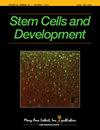人神经干细胞分泌组通过激活PPAR-γ调节小胶质细胞极化来抑制脂多糖诱导的神经炎症。
IF 2.5
3区 医学
Q3 CELL & TISSUE ENGINEERING
引用次数: 4
摘要
神经炎症是多种神经退行性疾病的典型事件之一,而小胶质细胞是神经炎症发病机制的关键参与者。几项研究表明,神经干细胞(NSCs)由于其旁分泌产物而具有免疫调节益处,其中含有越来越多的营养因子。在本研究中,神经干细胞分泌组(NSC-S)对脂多糖(LPS)诱导的神经炎症模型的抗炎作用在体内进行了评估,并在体外进一步研究了其潜在机制。结果表明,NSC-S显著减轻了LPS诱导的小鼠行为障碍和炎症反应的严重程度。体外研究发现,NSC-S显著促进了小胶质细胞从促炎M1向抗炎M2表型的分化,并减少了促炎细胞因子的产生,同时提高了BV2细胞中的抗炎细胞因子。NSC-S促进过氧化物酶体增殖物激活受体γ(PPAR-γ)通路激活。然而,PPAR-γ抑制剂GW9662消除了NSC-S的这些作用。值得注意的是,NSC-S中的脂肪酸结合蛋白5(FABP5)可能介导PPAR-γ活化和炎症缓解。总之,NSC-S通过PPAR-γ途径促进LPS诱导的小胶质细胞介导的炎症消退。此功能可通过FABP5实现。本文章由计算机程序翻译,如有差异,请以英文原文为准。
Human neural stem cells secretome inhibits lipopolysaccharide-induced neuroinflammation through modulating microglia polarization by activating PPAR-γ.
Neuroinflammation is one of the typical events in multiple neurodegenerative diseases, whereas microglia are the critical participants in the pathogenesis of neuroinflammation. Several studies suggest that neural stem cells (NSCs) present immunomodulatory benefits due to their paracrine products, which contain mounting trophic factors. In the current study, the anti-inflammatory effects of neural stem cells secretome (NSC-S) on lipopolysaccharide (LPS)-induced neuroinflammatory models were evaluated in vivo and the underlying mechanism was further investigated in vitro. It was revealed that NSC-S significantly attenuated the severity of LPS-induced behaviour disorders and inflammatory response in mice. In vitro studies found that NSC-S significantly promoted the polarization of microglia from proinflammatory M1 to anti-inflammatory M2 phenotype, and reduced the production of proinflammatory cytokines while elevated anti-inflammatory cytokines in BV2 cells. NSC-S promoted peroxisome proliferator-activated receptor gamma (PPAR-γ) pathway activation. However, these effects of NSC-S were abrogated by PPAR-γ inhibitor GW9662. Notably, the fatty acid binding protein 5 (FABP5) in NSC-S may mediate PPAR-γ activation and inflammation remission. In summary, NSC-S promotes the regression of LPS-induced microglia-mediated inflammation through the PPAR-γ pathway. This function might be achieved via FABP5.
求助全文
通过发布文献求助,成功后即可免费获取论文全文。
去求助
来源期刊

Stem cells and development
医学-细胞与组织工程
CiteScore
7.80
自引率
2.50%
发文量
69
审稿时长
3 months
期刊介绍:
Stem Cells and Development is globally recognized as the trusted source for critical, even controversial coverage of emerging hypotheses and novel findings. With a focus on stem cells of all tissue types and their potential therapeutic applications, the Journal provides clinical, basic, and translational scientists with cutting-edge research and findings.
Stem Cells and Development coverage includes:
Embryogenesis and adult counterparts of this process
Physical processes linking stem cells, primary cell function, and structural development
Hypotheses exploring the relationship between genotype and phenotype
Development of vasculature, CNS, and other germ layer development and defects
Pluripotentiality of embryonic and somatic stem cells
The role of genetic and epigenetic factors in development
 求助内容:
求助内容: 应助结果提醒方式:
应助结果提醒方式:


